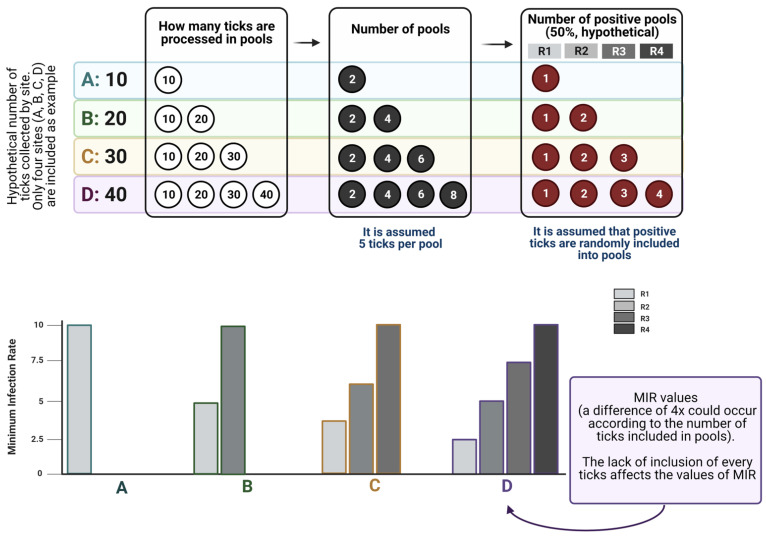Figure 3.
The effect of tick sampling on hosts on the determination of the Minimum Infection Rate (MIR) of a hypothetical pathogen. In table A we introduce four hypothetical host specimens (A, B, C, D) that carry 10, 20, 30 or 40 ticks. Of these hosts, researchers can retrieve all or a fraction of these ticks (indicated in the columns) and pools are prepared assuming a fixed number of 5 ticks per pool. We also assumed a fixed positivity rate of 50% under every condition, and made assumptions about the ways the calculation of MIR is affected by these factors. The chart shows the values of MIR obtained from hosts A, B, C or D based on the number of positive pools. It can be observed that values can change from MIR = 2.5 to MIR = 10 according to the number of ticks collected, assuming the same infection rate. The conclusion is two-fold: even if researchers consider MIR from ticks collected while feeding to be reliable (which it is not), it is deeply affected by the number of ticks collected. Created with BioRender.com.

